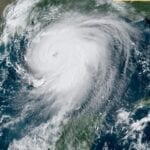Organizations operating within a mission-critical environment must adopt appropriate technology to mitigate potentially life-threatening problems. As we acknowledge National Preparedness Month this September, we need to remember what is important to electric power customers. They expect to be kept safe, to be heard, and to receive realistic estimated restoration times—especially when a power line is destroyed during a seasonal thunderstorm or when brownouts occur during a heat wave. As a result, field service teams must be ready to respond in short order, and with enough agility to shift priorities as new demands arise.
Let’s take a look at the best practices and supporting technology that enables electric utilities to be prepared for the worst, and in doing so, keep consumers safe.
Optimize and Automate the Entire Storm Management Process
Field service organizations need operational visibility of their field employees, vehicles, equipment, parts, and other factors to ensure work is done as expected. With the right technology, these assets can be tracked and adjustments made as necessary.
For example, artificial intelligence-driven technology uses predictive data to reduce idle time, better account for travel time, and allow additional resources to step in quickly when necessary. These smart systems track trends, such as weather conditions throughout the year to help with future planning. In the months when there’s a higher probability for snow, the system schedules more low-priority work in case there’s a storm and the field service team needs to respond to serious damage. It could also look at historical traffic conditions during this type of weather and account for potential delays.
Enable Seamless Interaction Between All Parties
Optimizing and automating the entire storm management process enables seamless interaction between service workers, dispatchers, and other back-office functions. This is significant when the most-effective dispatchers, whether aided by technology or their experience, have access to critical information about every job planned for the day. They can combine intelligent automation, real-time visibility, and their own tribal knowledge to make adjustments on the fly if necessary—especially when an emergency presents itself and technicians are forced to divert their attention to more pressing jobs.
To ensure seamless communications for customers, it is critical to remove the common frustration of being “in the dark” by keeping customers informed on the status of repairs and the expected estimated time of restoration (ETR). Customers understand that Mother Nature can impact a utility’s infrastructure; however, frequent updates regarding the restoration process can help them manage the needs of their household. As such, meeting customer expectations should not be reserved for the good times, but, probably even more importantly, be an integral part of emergency response. This can involve the following:
- Website and mobile applications for personal communication to enable pre-storm warnings, outage notifications, follow-up scheduling, on-line bill pay, etc.
- Social media, texting, and interactive voice response (IVR) to keep customers up-to-date.
- Customer analytics to better inform technicians during post-emergency outreach.
These capabilities ensure continued customer engagement that benefits both the field service team and the customer when tensions are high and safety is a chief concern.
Onboard Third-Party Resources and Mutual Aid
In all field service operations, mobility is a key element for real-time insights to be shared between the back office, field supervisors, crews, and technicians, who may or may not be direct employees of the utility company. The proliferation of smart devices enables field teams to have access to work-related data, diagnostic tools, and task automation. With all work dispatched to mobile devices, organizations can take advantage of real-time visibility into each engineer’s workday and schedules, helping to meet extremely tight service level agreement (SLA) windows and maximizing partnerships with third-party resources and mutual assistance networks.
Virtually all severe weather and oversize outage conditions require the coordination of multiple resources. Crews are often relocated from other divisions, ongoing work needs to be paused (and rescheduled once back to normal conditions), equipment needs to be moved to the impacted areas, and utilities must coordinate with customers, contractors, and mutual assistance.
Utilizing a mobile application allows any worker, internal or external, to quickly onboard and receive work, and submit onsite damage and completion reports. Timesheets and parts usage can be automatically tracked, providing an accurate and real-time view of operational status. A map-driven mobile field interface allows field crews to capture incident details. Other components of the mobile device, such as GPS and cameras, capture data and directly link it to geospatial coordinates and the corresponding assets. This data contributes to a more accurate ETR for emergency dashboards, customer communications, and crew requirement assessments.
If you work in the energy industry long enough, you learn that no matter how solid your plan is, it will eventually collide with reality. The adage “hope for the best, prepare for the worst” is not the mantra of a pessimist. It’s the pragmatism of a seasoned field service leader, encouraging preparation for less-than-best-case scenarios. To ensure a better customer experience, while successfully mitigating dangerous environments, the electric power industry must invest in the increasingly sophisticated technology and strategies necessary to remain prepared.
—Paul Whitelam is senior vice president of Global Marketing at ClickSoftware.









